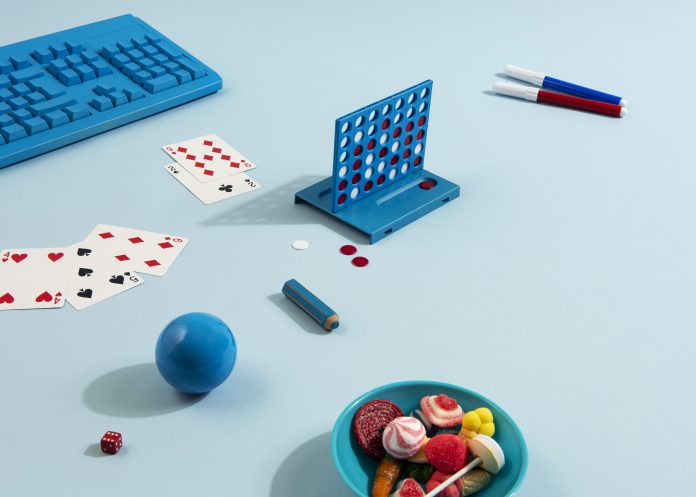You know what’s weird? We’ve been playing card games in India for over a thousand years, and nobody really talks about what these games were doing to our ancestors’ brains. I mean, sure, everyone knows about chess being this grand cognitive exercise, but the card games? The ones played in temple courtyards and merchant houses? Those get written off as mere entertainment.
Here’s the thing though – those andar bahar cards weren’t just pretty pictures. They were basically neurological training wheels for an entire civilization.
Your Brain Doesn’t Know It’s Ancient
Think about it: when you’re holding a hand of modern playing cards, your brain fires up maybe three or four major networks. Pattern recognition, probability assessment, maybe some social cognition if you’re playing poker. But those old Indian card games? They were lighting up the brain like a festival night.
Take the classic Mughal Ganjifa with its 96 cards across eight suits. You’re not just tracking hearts and spades here. You’re juggling suits named after court positions – the wazir, the ashvapati (lord of horses), the gajapati (lord of elephants). Each suit has its own hierarchy that doesn’t match the others. The red suits ascend differently than the black suits. It’s like your working memory is trying to run eight different programs simultaneously, and honestly, that’s exactly what’s happening in your prefrontal cortex.
The neuroscience folks would call this “enhanced cognitive load,” but what it really means is that your brain is being forced to maintain multiple competing rule sets at once. You know how when you travel to a country where they drive on the opposite side of the road, and your brain feels exhausted by evening? That’s the same mechanism, except these games triggered it intentionally.
The Mythology Circuit Nobody Mentions
Here’s what really happens when you play these games: you’re not just playing cards, you’re navigating entire cosmologies. The Dashavatara Ganjifa – the one based on Vishnu’s ten avatars – turns every hand into a theological puzzle. Your brain has to simultaneously process the game mechanics and the mythological significance of why Narasimha (the man-lion avatar) beats Vamana (the dwarf avatar) in certain contexts but not others.
Modern neuroscientists have this term called “semantic processing,” which basically means how your brain handles meaning. But these games were doing something twisted – they were forcing semantic processing to happen alongside strategic thinking. It’s not just “I need to play a high card,” it’s “I need to play Rama, but only after someone plays Ravana, because the narrative structure demands it.”
(And before you think this is just some cultural quirk, remember that your brain doesn’t actually care whether the symbols are avatars or abstract numbers. What matters is the cognitive architecture required to process layered meaning while making strategic decisions.)
The Social Brain Gets a Different Workout
Nobody warns you about the social dynamics of these games either. Modern poker faces are one thing – you’re hiding information, sure. But in games like Naqsh or Chad, you were often playing in teams that shifted mid-game based on who held certain cards. Imagine your anterior cingulate cortex (the part that monitors social alliances) trying to keep up with that.
You’re constantly updating your mental model of who’s aligned with whom. Oh, and by the way, these alignments weren’t random – they followed court hierarchies and social structures that everyone understood implicitly. So your brain is running this whole parallel process of social cognition that maps onto real-world power dynamics while you’re trying to count cards and track suits.
The really messed up part? This probably made people better at navigating actual court politics. The same neural pathways you’d strengthen during an evening of Ganjifa were the ones you’d need the next day when dealing with actual ministers and courtiers.
Pattern Recognition on Steroids
You know how modern card games have four suits with clear visual distinctions? Hearts are red, spades are black, simple shapes, easy to distinguish even in dim light. Ancient Indian cards said “screw that” and went full artistic.
Each card in a Ganjifa deck was hand-painted. The differences between suits might be the number of heads on a demon, the color of a horse’s saddle, or the direction a figure was facing. Your occipital lobe (the visual processing center) had to work overtime just to identify what you were holding. And here’s the kicker – because these were hand-painted, there was variation even within the same deck. Your brain had to build flexible categories, not rigid ones.
This is actually incredibly sophisticated from a neuroscience perspective. It’s called “categorical perception with fuzzy boundaries,” and it’s the same skill you need for reading different people’s handwriting or recognizing faces from different angles. These games were accidentally training exactly the kind of visual flexibility that modern education tries to develop through art classes.
The Memory Palace You Never Asked For
Here’s something that sounds simple but really isn’t: remembering which cards have been played in a 96-card deck. Modern card counters in Vegas are impressive, sure, but they’re usually tracking a standardized 52-card deck with clear numerical values. Try tracking 96 unique mythological figures, each with their own narrative significance and game value that changes based on context.
Players developed these elaborate mental techniques – not unlike the memory palaces that medieval scholars used. They’d mentally place cards in different rooms of imaginary buildings, or associate them with moments in epic stories. The hippocampus (your brain’s memory consolidation center) was getting a workout that would make modern memory champions jealous.
But it’s not just about raw memorization. The entorhinal cortex, which handles spatial and temporal context, was building these complex maps of not just what was played, but when and by whom. Players were unconsciously developing the same neural structures that London cab drivers develop when learning the city’s layout.
Why This Matters More Than You Think
Look, I’m not saying ancient card games were some secret neuroscience experiment. But they were doing something that modern games mostly don’t: engaging multiple brain networks simultaneously in ways that mapped onto real-world complexity.
Today’s games tend to isolate cognitive functions. Chess is pure strategy. Poker is probability and social deception. Memory games are, well, memory. But these ancient Indian card games were more like cognitive cross-training. They demanded visual discrimination, mythological knowledge, social awareness, strategic thinking, and memory – all at once, all the time.
The weird part is that we’ve actually gone backwards in some ways. Modern neuroscience is just now discovering the benefits of this kind of multi-network activation. They call it “cognitive reserve” – basically, the more different ways you challenge your brain, the more resilient it becomes. These card games were building cognitive reserve before anyone knew what that was.
There’s something oddly poignant about this. We’ve got all these brain-training apps now, designed by neuroscientists, optimized by algorithms. But five hundred years ago, someone in a Mughal court was getting the same (maybe better) cognitive workout from a hand-painted deck of cards, without knowing anything about neurotransmitters or neural plasticity.
The real lesson here isn’t that we should all start playing Ganjifa (though honestly, it wouldn’t hurt). It’s that the intersection of culture, play, and cognition is way more sophisticated than we give it credit for. These weren’t just games; they were entire cognitive ecosystems that shaped how people thought, remembered, and related to each other.
And maybe that’s what we’re missing when we reduce everything to optimized, isolated cognitive tasks. Sometimes the best brain training comes from something that wasn’t designed to be brain training at all – just humans being humans, playing complicated games that reflect their complicated world.






